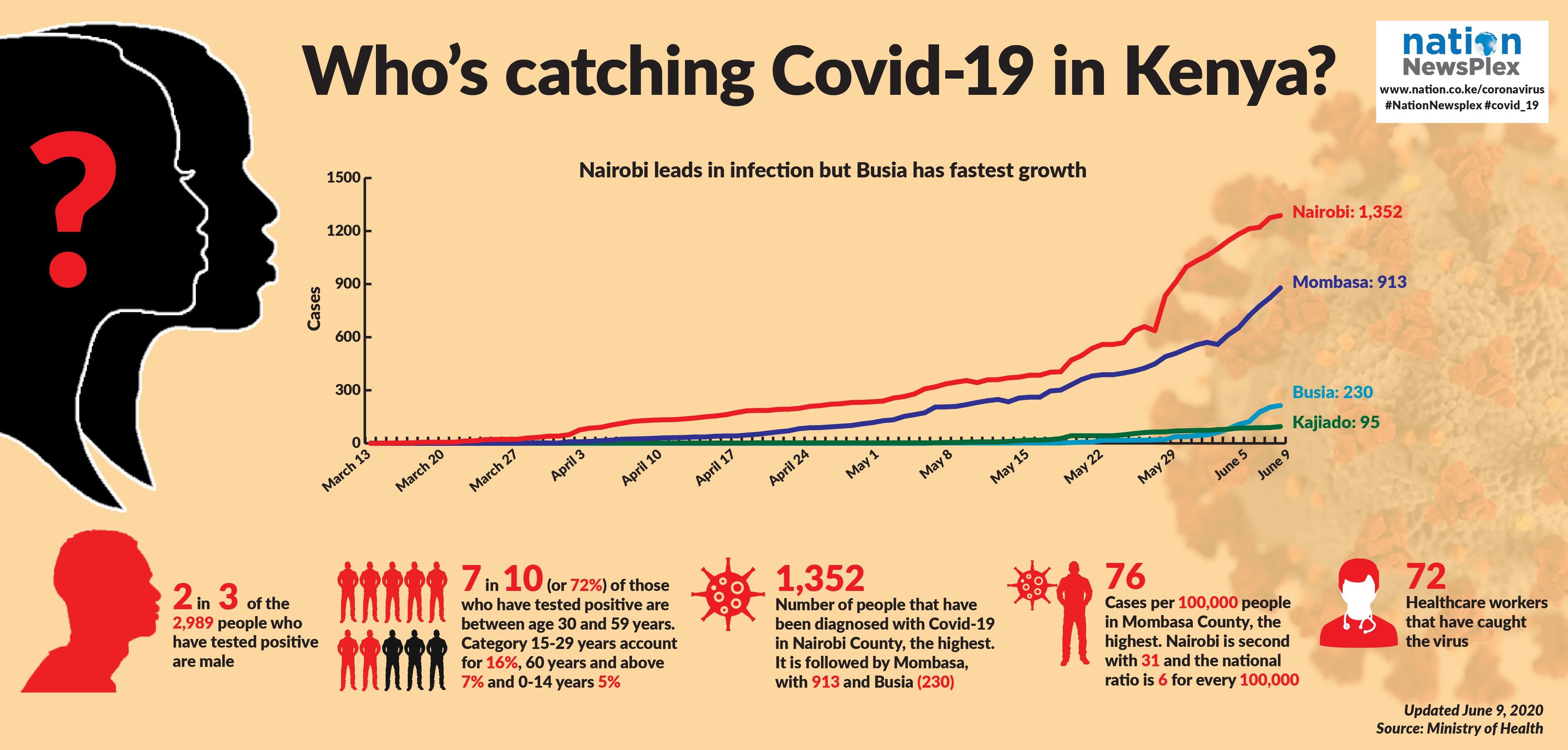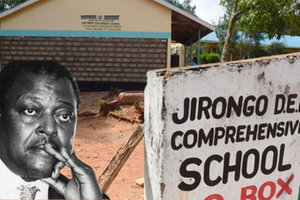Premium
Falling vaccinations rate threatens children’s lives and universal healthcare
DESIGN | COLLINS CHERUIYOT
Kenya could miss the opportunity to save billions of shillings for use in accelerating the country’s quest for Universal Health Coverage if the current trend of a declining immunisation rate is not reversed, child health data shows.
Illnesses and deaths due to vaccine-preventable diseases cost sub-Saharan Africa Sh1.3 trillion each year – resources that could be channelled towards strengthening health systems and building economies, according to WHO figures.
Vaccine-preventable diseases contribute a large chunk of causes of illnesses and deaths, especially in children in Kenya.
A study conducted in 94 low and middle income countries by the Johns Hopkins University School of Public Health in 2016 estimates that for every shilling invested in immunisation, a country saves an average of Sh16 in the health system, and the wider economy benefits with Sh44, by preventing death and disabilities in children and by keeping parents and families working, instead of spending time taking care of sick or disabled children.
''By vaccinating children, we are doing more than preventing diseases and saving lives. We are also ensuring that children get the education they deserve and returning valuable time to their families because they no longer need to make long hospital visits. Vaccinations also release scarce government funds,'' said Dr Matshidiso Moeti, WHO regional director for Africa. In sub-Saharan Africa, nearly 31 million children below age five suffer from vaccine-preventable diseases every year. More than half a million of them die due to lack of access to the vaccines they needed.
In Kenya, according to the United Nations Children’s Fund, one in three children aged below five years are at risk of diseases which can be prevented through vaccinations.
A NationNewsplex review of the national full immunisation coverage trend shows that Kenya is one of the many African countries missing out on the huge investment opportunity.
Kenya’s vaccination coverage has been falling steadily for the last five years, according to the Kenya National Bureau of Statistics (KNBS). In 2017, the country recorded a 63 percent coverage in full immunisation of children under the age of one, a 12-year low and lower than Africa’s average of 72 percent, which has stagnated for five years. Full immunisation is defined as a child having received a BCG vaccination against tuberculosis; three doses of DPT vaccine to prevent diphtheria, pertusis, and tetanus (DPT); at least three doses of polio vaccine; and one dose of measles vaccine.
Over half a million children missed vaccination in 2017, indicates data from the Ministry of Health. Mandera County had the lowest coverage (25 percent), followed by West Pokot (40 percent) and Trans Nzoia (44 percent).
According to the ministry, one in every five children is not fully vaccinated by their first birthday with vaccine formulations provided against 10 childhood diseases.
Even though the very low coverage was largely occasioned by the five-month nurses’ strike, the country’s vaccination rate had been declining since 2012, when it stood at 83 percent after rising from 30 percent in 2000.
Vaccination financing
Kenya’s immunisation programme is jointly funded by the government and the Global Alliance for Vaccines and Immunisation (Gavi), which disbursed a total of Sh47.9 billion from 2000 to 2018 in vaccine and non-vaccine support. Gavi data indicates that Kenya has been shouldering between 10 percent and 25 percent of its the vaccines budget every year.
However, this collaboration has been shaky for the last five years, the same period vaccination coverage recorded a steady decline.
Gavi requires the costs of its supported vaccine be shared between the government and the alliance, in a co-financing arrangement. In the first stage countries pay a fraction of the costs of the vaccine introduced by Gavi support (Sh20 per dose).
In 2014 Kenya ascended to a lower-middle income country status, which, according to the Gavi arrangement, translates into preparation for a gradual reduction of funding.
The co-funding rules stipulate that contribution by a government receiving Gavi funding increases by 15 percent per year in the preparatory transition stage (phase 2).
Kenya entered the preparatory transition stage in 2017 and will proceed to the accelerated transition phase in 2022. It is projected that the country will have to raise more than Sh5 billion for child immunisation annually by 2026 when the co-funding deal with have wound up, an amount that will certainly rise over the subsequent years in consistence with population growth.
When a country enters accelerated transition (phase 3), the government’s share of vaccine costs increases from the level it had reached during the preparatory transition stage to 100 percent of the cost over a period of five years.
If the country does not move in to fill the financial gap left behind in the transition stage and thereafter, many more children will be left vulnerable to vaccine-preventable diseases.
Recently, there was distress in some counties following reported incidents of vaccine shortages. Among the vaccines said to be in short supply was BCG, which protects newborns from different forms of TB, including TB meningitis, which is common in infants.
However, the Ministry of Health clarified that there was an adequate supply of all vaccines in the country and attributed the few cases of shortages to distribution failures in individual counties.
Health experts attending the biannual Regional Immunization Technical Advisory Group meeting in Brazzaville, Congo, last month urged African countries to strengthen their routine immunisation, emphasising the need for greater government ownership of disease surveillance programmes to ensure that the progress made in curbing vaccine-preventable diseases is not reversed.
''The fact that most sub-Saharan African countries continue to rely on external funding for immunisation financing is a strong indicator of the work that remains to be done,'' said Dr Richard Mihigo, programme manager for immunisation and vaccine development at the WHO Regional Office for Africa. ''Governments have a central role to play to fill upcoming funding gaps and ensure immunisation programmes remain strong and vigilant.''
There has been a feeling in certain quarters that Kenya is not financially ready for a transition into self-funding, despite having leapt into a middle-income country status. Médecins Sans Frontières (MSF) has appealed to Gavi not to phase out funding for 20 countries, including Kenya, whose capacity to self-finance is in doubt, considering the prevailing low immunisation coverage levels in those countries. ''Gavi needs to improve its funding model and urgently address the structural gaps in the routine immunisation systems of countries transitioning out from support. Why should countries lose Gavi's full support when their children still need it?'' read a statement by MSF in 2017.
Universal Health Coverage
Kenya’s grim statistics and funding jitters come at a time the country plans to roll out an ambitious Universal Health Coverage programme in the country in 2022. Piloting of the package is underway in four counties: Kisumu, Isiolo, Nyeri and Machakos.
Even as the government and proponents of the programme forge ahead, there have been numerous discussions around the modalities for its financing and financial sustainability. Health experts believe that curbing vaccine-preventable diseases could be one sure way of cutting down the cost of managing a health system.
''Vaccine-preventable diseases contribute a large chunk of causes of illnesses and deaths, especially in children in Kenya. Since it is much cheaper to prevent a disease than to treat, prioritising immunisation in Universal Health Coverage will go a long way in achieving the objectives of UHC,'' says Dr Rudi Eggers, WHO Kenya representative.
The importance of surveillance and prevention played out last year when a polio virus was detected in sewage, leading to several polio campaigns in selected counties to boost children’s immunity.





